Order of Noble Bukhara, II Class, III Grade
SKU: 01.SRU.0169.109.01
Estimated market value:
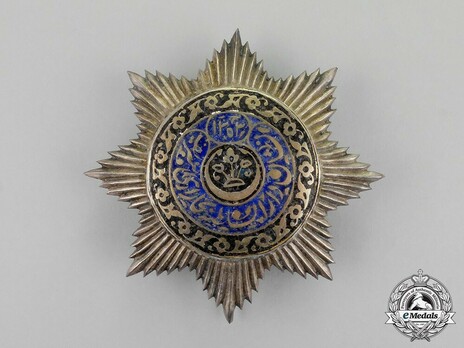
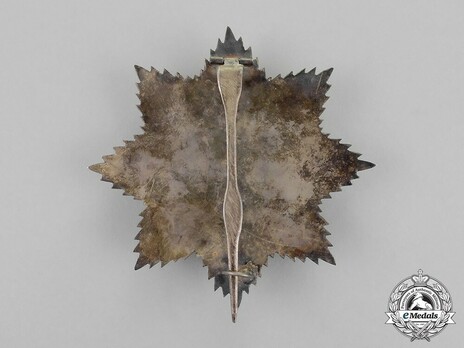
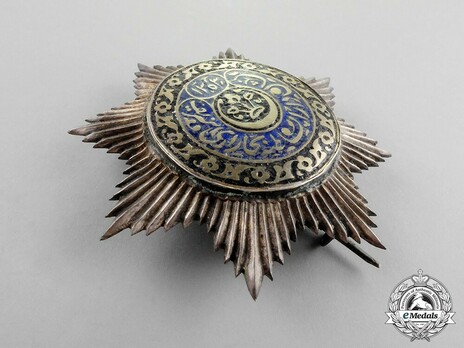
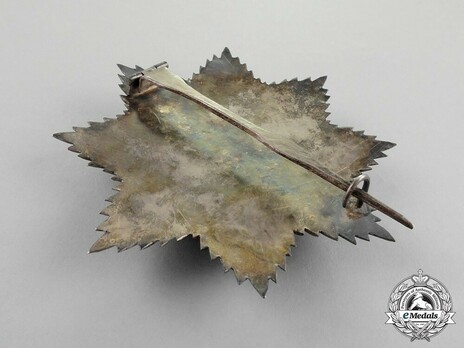
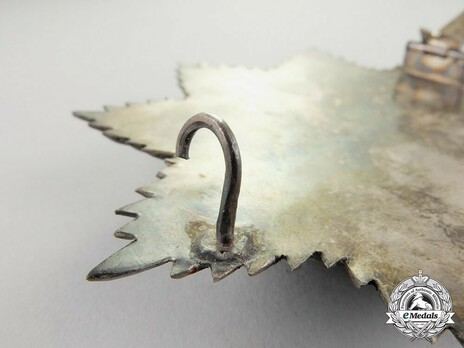
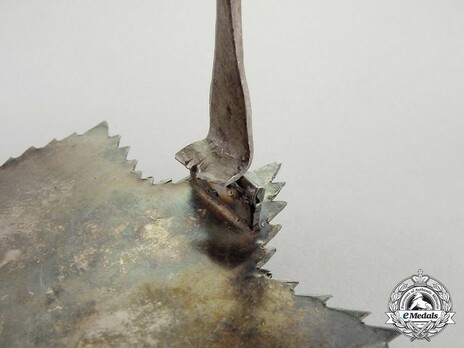
Estimated market value:
Attributes
History
The Order of Noble Bukhara was established as a Single Grade as "Nishoni dar-us-saltani Bukhoroi Sharif" in 1881 by Emir of Bukhara, Muzafar-ad-Din, in Bukhara, Uzbekistan, when Bukhara became a Russian protectorate.
The Russin name of the order is "орден Благородной Бухары".
It is also known as "Бухарская золотая звезда" ("Bukhara Gold Star") and "Бухарский орден золотой звезды" ("Bukhara Order of the Golden Star"). In some literature the Order is also known as “Order of the Rising Star of Bukhara”.
In 1882, some officers of the Bukhara Army had already been awarded the Nobel Bukhara Order, but the Emir refrained from giving wide awards to the Russian, because he feared the displeasure of his clergy. When Emir Abdala-khaad took over the throne in 1885, the Order became the main offering to the representatives of the Russian administration. It was allowed to accept the award to Russian subjects. It was forbidden to wear it until 1893, except only if the distinguished person should meet with the Emir or his representative.
In 1893 the order was renewed and divided into 8 degrees. As prescribed in the Russian Federation, badges and ribbons were introduced. The shape of the slit mark of the Golden Award was very complex, decorated with diamonds, and a ribbon brooch was provided for. The Persian inscription on red and blue enamel reads: "The State of Noble Bukhara".
The Order gained fame in Russia in 1893, which was facilitated by the three-month trip from Emir Abdala-Khad to Russia. The published diary or the Emir says that on the trip 150 stars were awarded to all kind of people - members of the imperial family up to newspaper correspondents. After a while, the Emir began to distribute the Order to his subjects. By the beginning of the 20th century it was difficult to find an official, a bat, an officer in Bukhara, who wouldn't have a star on his robe.
The last order was awarded in 1920.
The basis of the awards are often Russian or Persian stars, from which medallions were removed and instead provided with welded circles coated with multi-colored enamel (blue or green). The obverse shows the date of the beginning of the rule of the Emir and the inscription in Arabic script, translates to "Prize of the capital of Noble Bukhara". The award was first given to Emperor Alexander II and later to Nicholas II.
The Order consists of these degrees of distinction:
Order of Alexander the Sun - Gold Star with diamonds
Order of the Crown of the State of Bukhara - Gold Star with diamonds
Order of the Crown of the State of Bukhara - Badge
I Class, I Grade - Gold Star
I Class, II Grade - Gold Star
I Class, III Grade - Gold Star
II Class, I Grade - Silver Star
II Class, II Grade - Silver Star
II Class, III Grade - Silver Star
I Class Gold Medal
II Class Gold Medal
III Class Silver Medal
Medal for Military Service
The individual classes differ in the size of the central medallion and the ornament that was placed in it.
Sometimes only the middle of the medallion was gilded, and the rays of the stars were silver. The shape of the insignia (at least the first 6 degrees) was borrowed from the star of the Order of St. Anne.
After all, the Russians wore their stars right on their chests, not on the ribbons. That's why these models don't receive the ribbon.
The Order of the Crown of the State of Bukhara was established by the Emir of Bukhara, Abdala- Ahad in 1886. This one came in a full set of accessories: The order star, a badge and a red ribbon, repeating the color of the ribbon of the Order of Alexander Nevsky.
The Order is also known as "Order of the Taj".
The elegant Decoration is gold and formed like a cut-through rhombus, decorated with four large and several small diamonds with a round blue center. From the round blue enameled center to the corners of the rhombus stretched the rays of the cross, studded with diamonds, and between the rays were placed ruby triangles. The Arabic inscription translates to "Award of the capital of Noble Bukhara". It also has the date of the beginning of the rule of the emir inscriptied.
The badge of the Order has a round enamel blue medallion with the inscription "The Badge of the Crown of the State of Bukhara" with four diamonds.
Since 1906, the well-known firm "Edward" put the hallmarks on the awards of Bukhara.
The Order of the Crown of the State of Bukhara exceeded its predecessor the Noble of Bukhara by rank and in it's design (the influence of Russian order traditions was visible) but didn't last long.
In 1898, the Order of Alexander the Sun was established in memory of the Russian Emperor Alexander III. It was intended only for awarding Russian high-ranking officials and became the highest award of the Order of Noble Bukhara.
It is also known as "Iskander Salis Order".
The Order was made of pure gold in the form of a star with eight short rays. It is covered with enameled ornament. In the central medallion are 4 diamonds arranged in the form of a triangle, meaning the letter “A”.
Underneath is a small circle with the Arabic numeral “III”, surrounded by diamonds. The circular inscription of the order translates to "Order of Iskander Salis of the capital city of Noble Bukhara."
The golden clasp of the order was made in the form of a triangle surrounded by an enamel ornament. The ribbon is dark red with a white stripe in the middle.
The star was worn on the right side of the chest.
The Order of Noble Bukhara also includes three Medals of Zeal. They were made of gold, silver, bronze and copper, covered with multicolored enamel with various inscriptions. The inscription could contain the name of the recipient and the reason for awarding the award (“For diligence and merit”).
The I Class Medal in Gold has a octahedral shape and was worn around the neck on a red ribbon. The II Class is gold, round, and was worn on a red ribbon on the chest. In the last years of the emirate's existence, the first two Classes of the medal were made bronze and gilded, the III Class of the round medal was silver.
In 1915, the Emir established another drop-shaped medal with the inscription: "In memory of the war, dedicated servants. Noble Bukhara. 1915-1916." It was issued to Bukharians mobilized for military service in the tsarist army of Russia.

Versions
$1000 USD
Silver/Enamelled
Obv.: [ARABIC INSCRIPTION]
99x95mm


Case Of Issue
N/A
Comments
Sign in to comment and reply.


Scroll Top